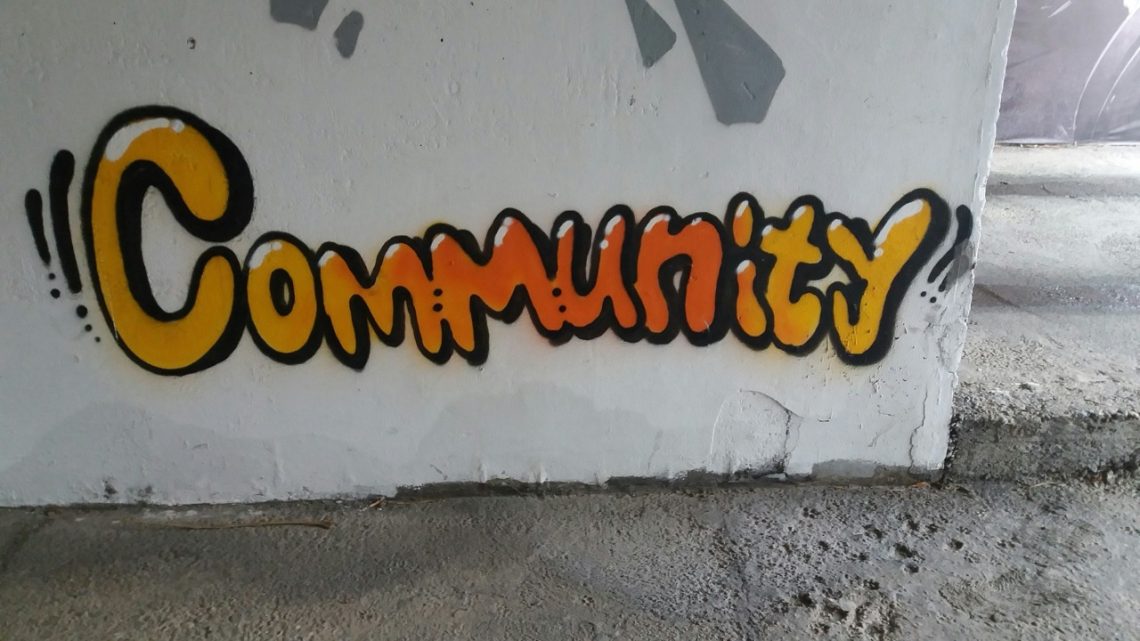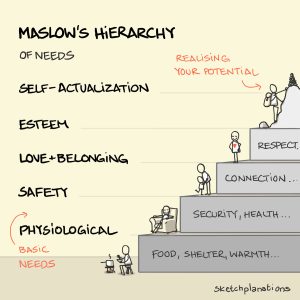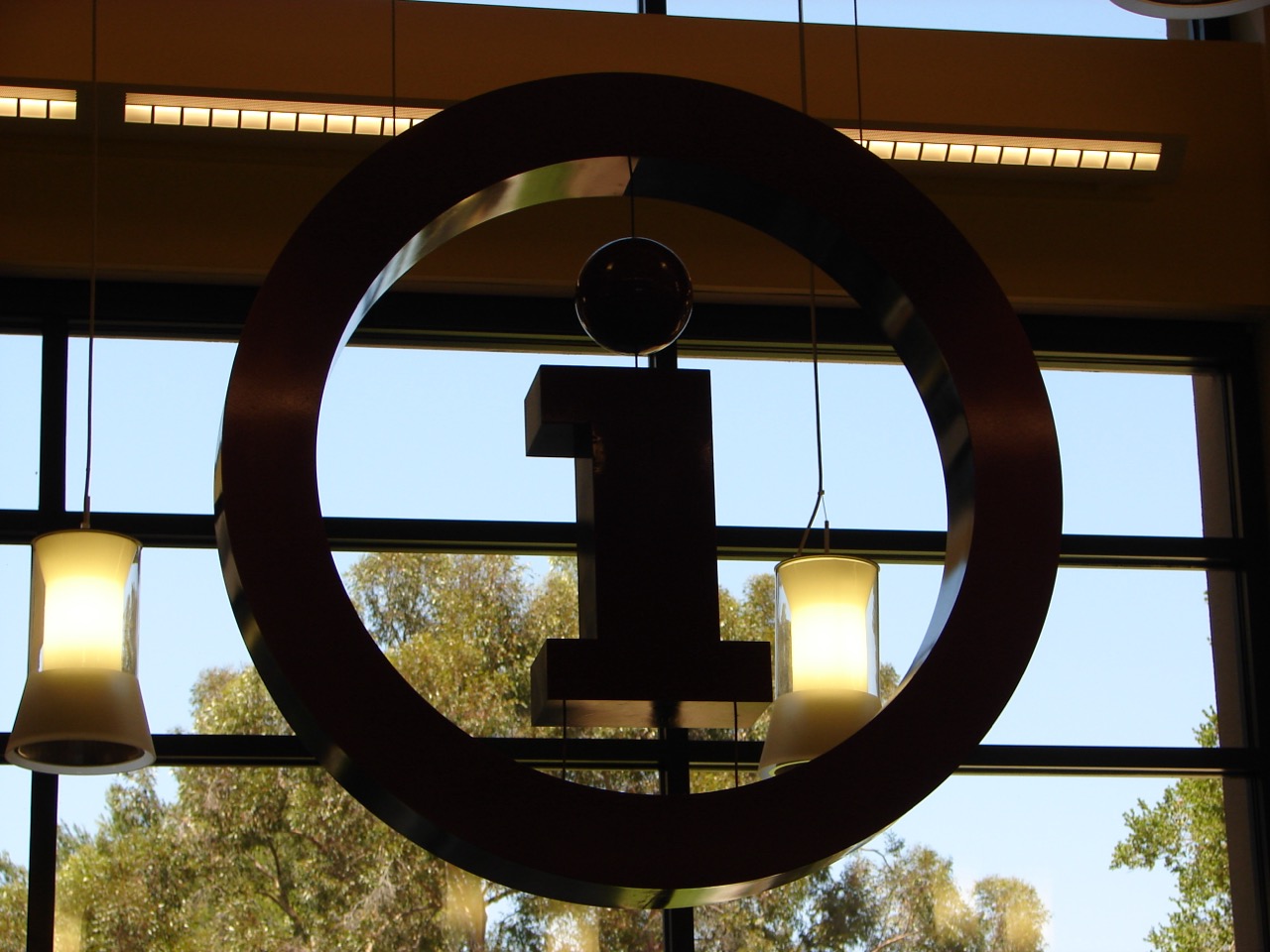
Thinking about Hyperlinked Communities
“Somewhere along the line, we confused going to work
with building a fort.”
—David Weinberger, The Cluetrain Manifesto
Effectively serving the whole community is something that I think about all the time as a frontline library worker. To me it’s about meeting all patrons, potential and current, where they are. I mean this in both a literal and figurative sense. In Chapter three of Library 2.0, Casey suggests that libraries find out where, in the community, people are getting their needs met. We can make our services available where people already are. In fact, it’s already being done with self-serve library kiosks in unexpected places. Could watching someone make use of this convenience encourage other people to sign up for free library cards? I wonder in what other ways we can engage in the community.
Meeting people where they are can also mean sending materials to homebound patrons and nursing home residents. Rather than waiting for cast-off books, folks who can’t come to the library can read some of the latest books and listen to them on CDs, or preloaded audio players. It’s not a new idea, but how many community members are aware of this service? As Casey (Library 2.0) says, “Reaching out to the community is critical to any successful service.” One good way is sharing videos like the one below on various social media platforms to spread the word in the places where people often get information.
How about the figurative sense of meeting people where they are? It’s a fact that now much of being a successful adult in this society requires using computers and the internet. It’s rare to be able to apply for/find a job or fill out forms without computer skills? Stephens touches on this in his essay, “Making the Connection” in Wholehearted Librarianship. Even registering children for school is an online task. While libraries can provide the equipment, unfortunately, I often hear patrons say, “I’m computer illiterate.” as they stare scornfully at their phones. We need to find creative, compassionate ways to help people over the hurdle of digital aversion often brought on by inexperience or lack of means.
But like the squeaky wheel adage goes, organizations seem to cater to the people who complain the loudest—uh, I mean those who provide compelling feedback. While those of us in the service industry may joke about it, in the “Transparency. Radically. Simple.” article Weve Zine writer, Ingle implores us to consider those suggestions genuinely to make small but impactful changes. It’s good advice.

But let’s not forget that there are some service issues that never make it onto a comment card. If we bother to look, they are hiding in plain sight.
While I see a lot of people at my library who appear to be getting more than their basic needs met, there are also some who may be on the other end of that spectrum, and lots of others somewhere in between those points. Connecting people in real need to our services, as Stephens emphasizes in Wholehearted Librarianship, is another way of meeting people where they are. Libraries are uniquely positioned to do just that and not just in the building. I’m hopeful when I see examples of bringing the librarian to the community as shown below.
There’s no shortage of ways libraries can make people’s lives better. We just have to look for the opportunities and get to it.





9 Comments
Chelsea
Hi Sue,
First off, I love the setup of your blog! The background color is very pretty!
Your post really resonated with me, especially your point about meeting patrons where they are, both literally and figuratively. I think that phrase captures the heart of what Library 2.0 and the hyperlinked library are all about: being adaptable, empathetic, and willing to rethink traditional boundaries of service. The examples you mentioned, like self-serve kiosks and home delivery for homebound patrons, show how innovation doesn’t always mean reinventing the wheel.
Your reflection leaves me thinking: How can we make the invisible needs in our own communities more visible? And how can we design library services that respond to them before anyone even asks? I look forward to thinking about these questions in my current role as a library assistant, and seeing how I can help both users and nonusers by meeting them where they are.
Good luck with the rest of your semester. I look forward to seeing your future work!
– Chelsea
Sue Donnim
Hi Chelsea! I love your question, “How can we make the invisible needs in our own communities more visible?” If we can find time to reflect on our interactions with patrons, we can better see the broader patterns of wins as well as challenges.
With that knowledge we can improve our services and devise some interventions to have in mind for when a challenging situation happens again. And isn’t that part of getting to know your community? Then the creativity comes into play. What do these services and interventions look like? That’s simultaneously the hard and the most fun part!
As for the blog appearance, I just switched from Hemingway to Ashe and I’m still figuring the customizations out. So thanks for boosting my confidence with your comments!
@suedonnim
missjennthelibrarian
Hello!
I love the quote at the start of your post. I think this is a great reminder to get out into the community. Like you point out in your post, there a huge percentage of people who don’t visit the library, including the homebound, families who are juggling more than one job, etc. You mention a lot of great examples of getting out into the community through a mail service, mobile collections through vending machines, and the laundry mat. I think the possibilities are endless if you’re focused on the community versus the amount of work it might take to offer these services.
Sue Donnim
Yes, thank you for mentioning the families (or really anybody) juggling more than one job. And focusing on the community doesn’t have to mean buying expensive equipment. That’s why I love the laundromat example so much.
Michael Stephens
@suedonnim I really appreciate how you were addressed folks that have needs that aren’t readily apparent. One thing I’ve suggested with libraries I’ve worked with is to really rethink the way they survey users instead of saying what do you love about the library or what kind of library do for you? I would suggest using questions such as what would make your life easier or what is something you would love to learn about and why.
Sue Donnim
@michael, I agree that those are much more useful questions. Sometimes I think we know some of those answers already and are just unwilling to implement solutions because those solutions are either imperfect or inconvenient.
Michael Stephens
@suedonnim I agree. I would hope we would work through the concept of inconvenience to improve services.
Sue Donnim
@michael agree! Otherwise why are we even here?
Michael Stephens
@sue 100%!